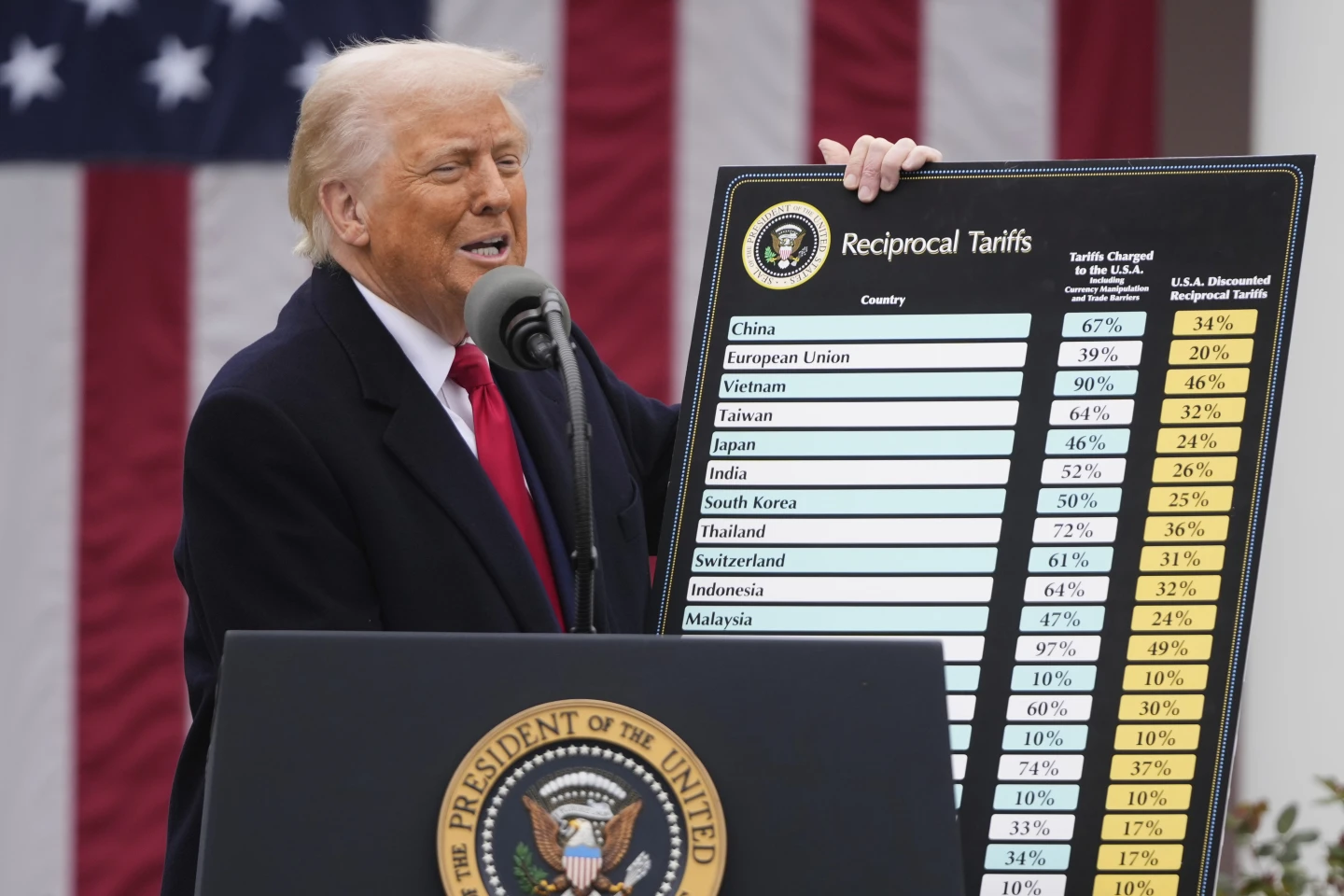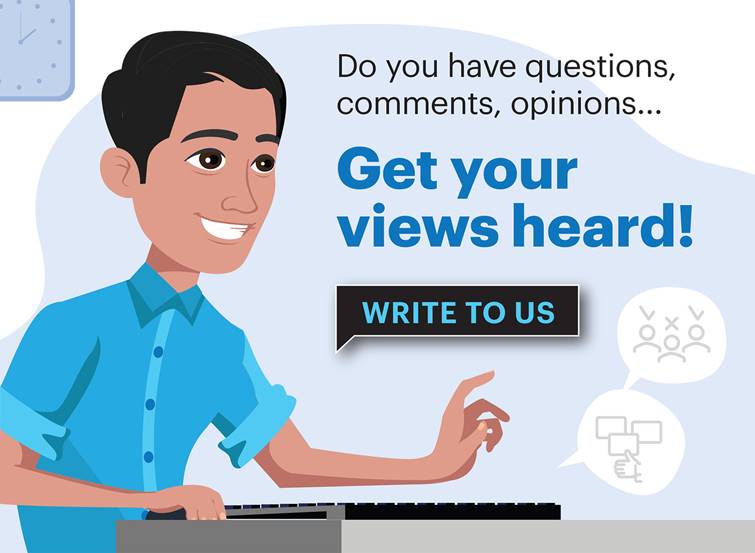WASHINGTON (AP) — President Donald Trump on Wednesday announced far-reaching new tariffs on nearly all U.S. trading partners — a 34 per cent tax on imports from China and 20 per cent on the European Union, among others — that threaten to dismantle much of the architecture of the global economy and trigger broader trade wars.
Trump, in a Rose Garden announcement, said he was placing elevated tariff rates on dozens of nations that run meaningful trade surpluses with the United States, while imposing a 10 per cent baseline tax on imports from all countries in response to what he called an economic emergency.
The president, who said the tariffs were designed to boost domestic manufacturing, used aggressive rhetoric to describe a global trade system that the United States helped to build after World War II, saying “our country has been looted, pillaged, raped and plundered” by other nations.
The action amounts to a historic tax hike that could push the global order to a breaking point. It kickstarts what could be a painful transition for many Americans as middle-class essentials such as housing, autos and clothing are expected to become more costly, while disrupting the alliances built to ensure peace and economic stability.
Trump said he was acting to bring in hundreds of billions in new revenue to the U.S. government and restore fairness to global trade.
Trump declared a national economic emergency to levy the tariffs. He has promised that factory jobs will return to the United States as a result of the taxes, but his policies risk a sudden economic slowdown as consumers and businesses could face sharp price hikes.
The president’s higher rates would hit foreign entities that sell more goods to the United States than they buy. The administration essentially calculated its tariff rates to raise revenues equal in size to the trade imbalances with those nations. Trump then halved that rate in an act that he described as “very kind.”
The White House says the tariffs and other trade imbalances led to an USD1.2 trillion imbalance last year. Administration officials suggested it could take an extended set of actions by other countries to bring down the new tariffs their imports now face, and retaliatory tariffs by those countries could make the situation worse.
Olu Sonola, head of U.S. economic research at Fitch Ratings, said the average tariff rate charged by the United States would increase to roughly 22 per cent from 2.5 per cent in 2024.
The new tariffs will come on top of recent announcements of 25 per cent taxes on auto imports; levies against China, Canada and Mexico; and expanded trade penalties on steel and aluminum. Trump has also imposed tariffs on countries that import oil from Venezuela and he plans separate import taxes on pharmaceutical drugs, lumber, copper and computer chips.
Canada and Mexico would not face higher rates on what they’re already being charged by Trump in what he says is an effort to stop illegal immigration and drug smuggling. As of now, goods that comply with the USMCA North American trade pact would be excluded from those tariffs.

Threats of backlash
None of the warning signs about a falling stock market or consumer sentiment turning morose have caused the administration to publicly second-guess its strategy, despite the risk of political backlash.
Senior administration officials, who insisted on anonymity to preview the new tariffs with reporters ahead of Trump’s speech, said the taxes would raise hundreds of billions of dollars annually in revenues. They said the 10 per cent baseline rate existed to help ensure compliance, while the higher rates were based on the trade deficits run with other nations and then halved to reach the numbers that Trump presented in the Rose Garden.
Based on the possibility of broad tariffs that have been floated by some White House aides, most outside analyses by banks and think tanks see an economy tarnished by higher prices and stagnating growth.
Trump would be applying these tariffs on his own; he has ways of doing so without congressional approval. That makes it easy for Democratic lawmakers and policymakers to criticise the administration if the uncertainty expressed by businesses and declining consumer sentiment are signs of trouble to come.
Rep. Suzan DelBene, D-Wash., said the tariffs are “part of the chaos and dysfunction” being generated across the Trump administration. The chair of the Democratic Congressional Campaign Committee stressed that Trump should not have the sole authority to raise taxes as he intends without getting lawmakers’ approval, saying that Republicans so far have been “blindly loyal.”
Allies brace themselves
Longtime trading partners are preparing their own countermeasures. Canada has imposed some in response to the tariffs that Trump tied to the trafficking of fentanyl. The European Union, in response to the steel and aluminum tariffs, put taxes on EUR26 billion (USD28 billion) worth of U.S. goods, including on bourbon, which prompted Trump to threaten a 200 per cent tariff on European alcohol.
Many allies feel they have been reluctantly drawn into a confrontation by Trump, who routinely says America’s friends and foes have essentially ripped off the United States with a mix of tariffs and other trade barriers.


